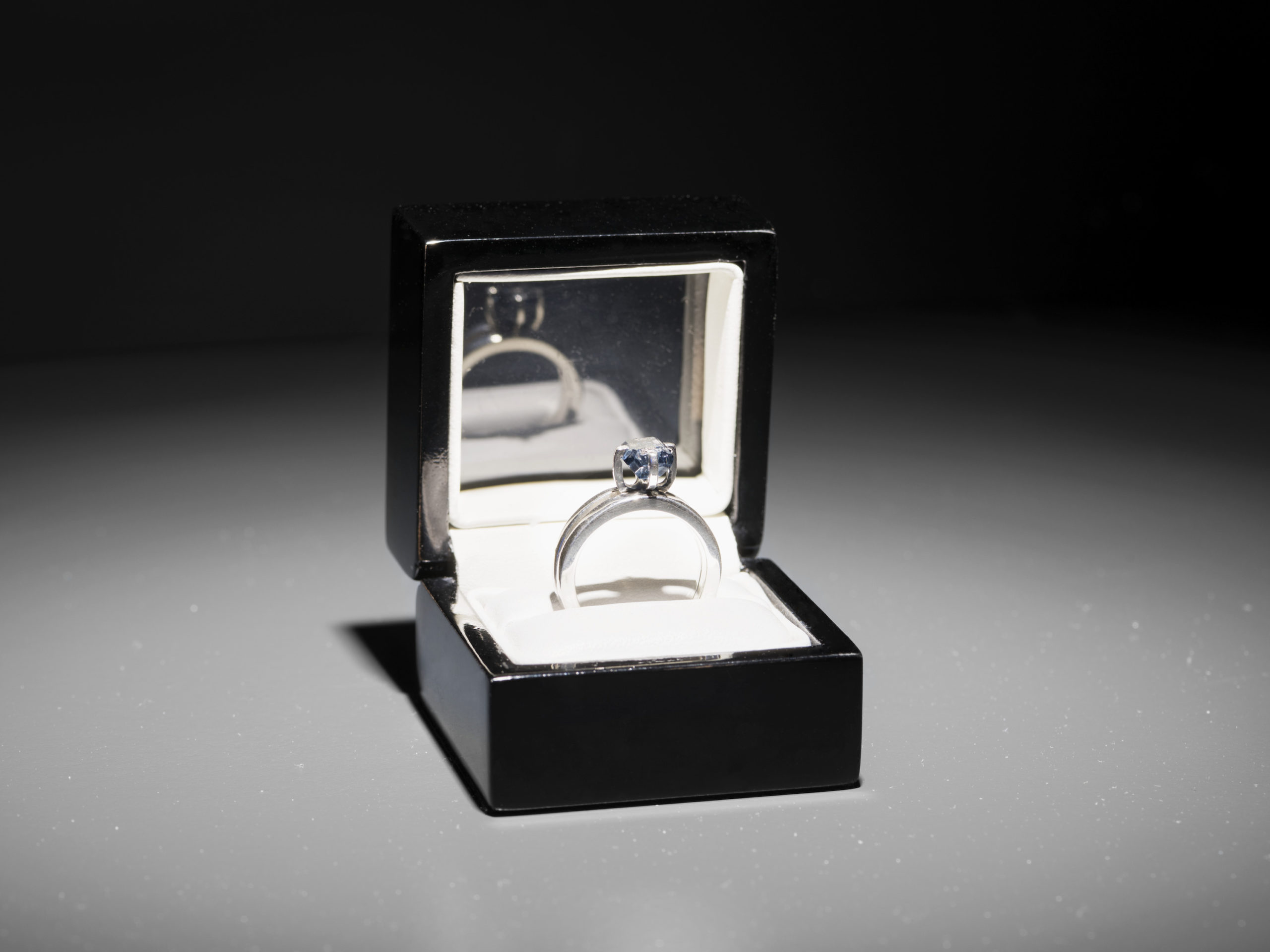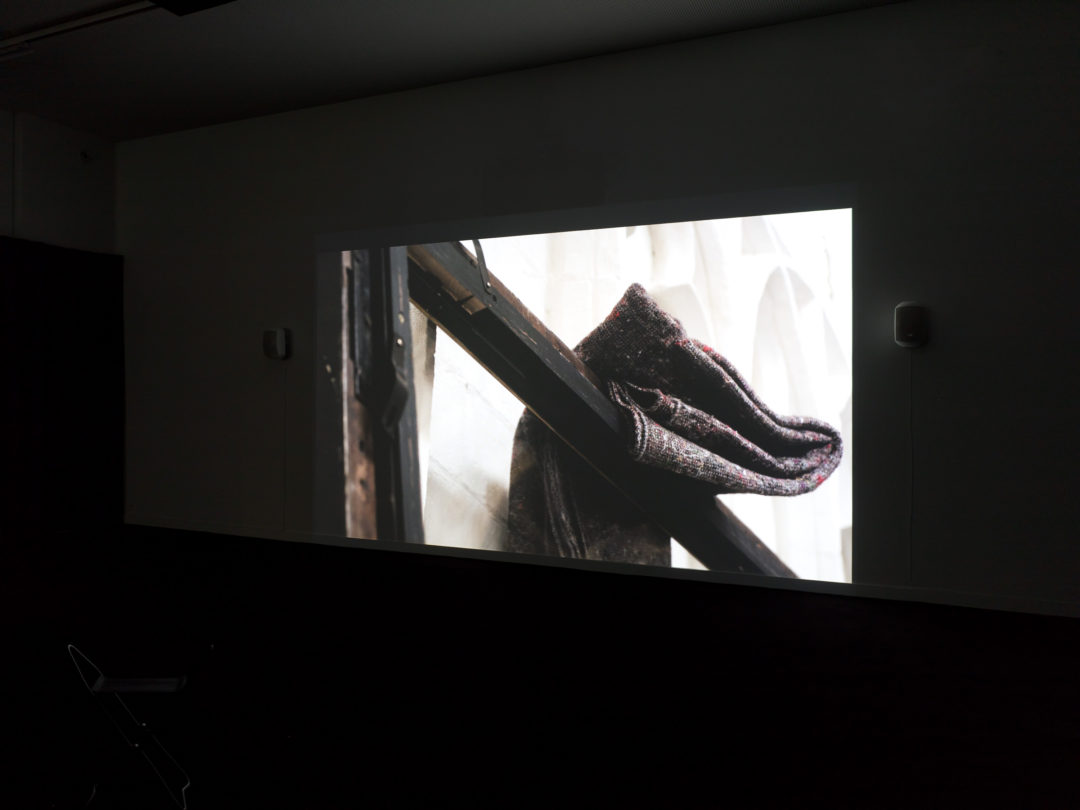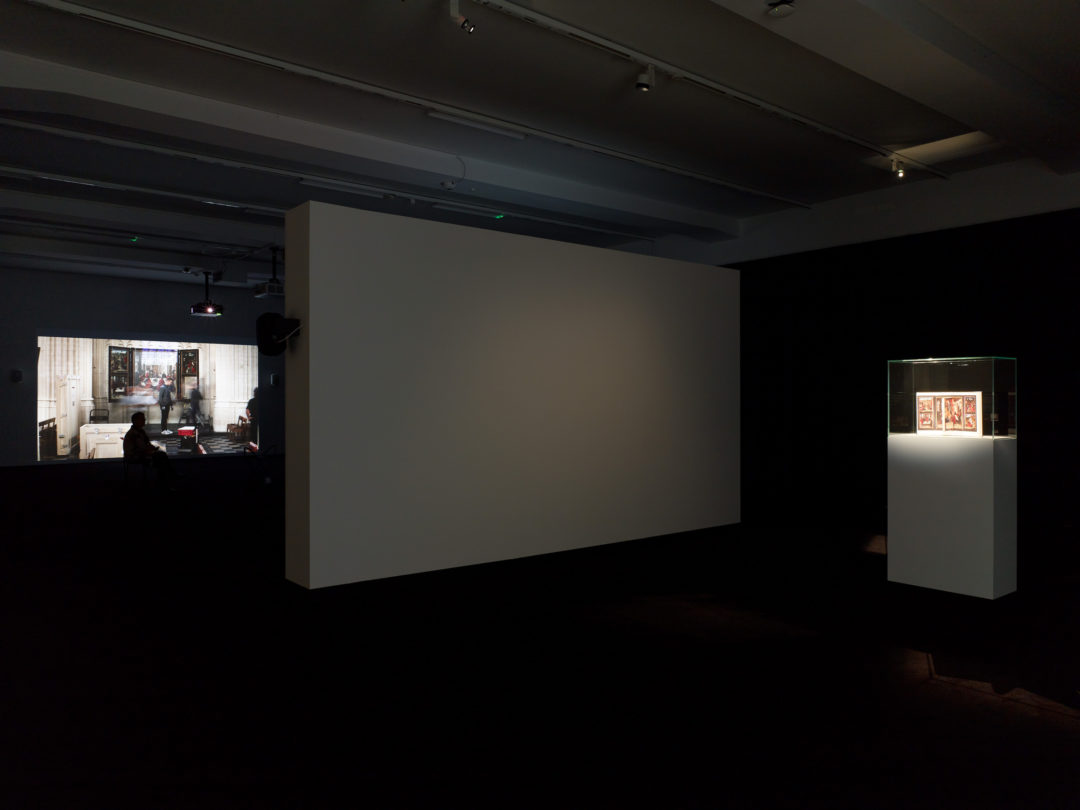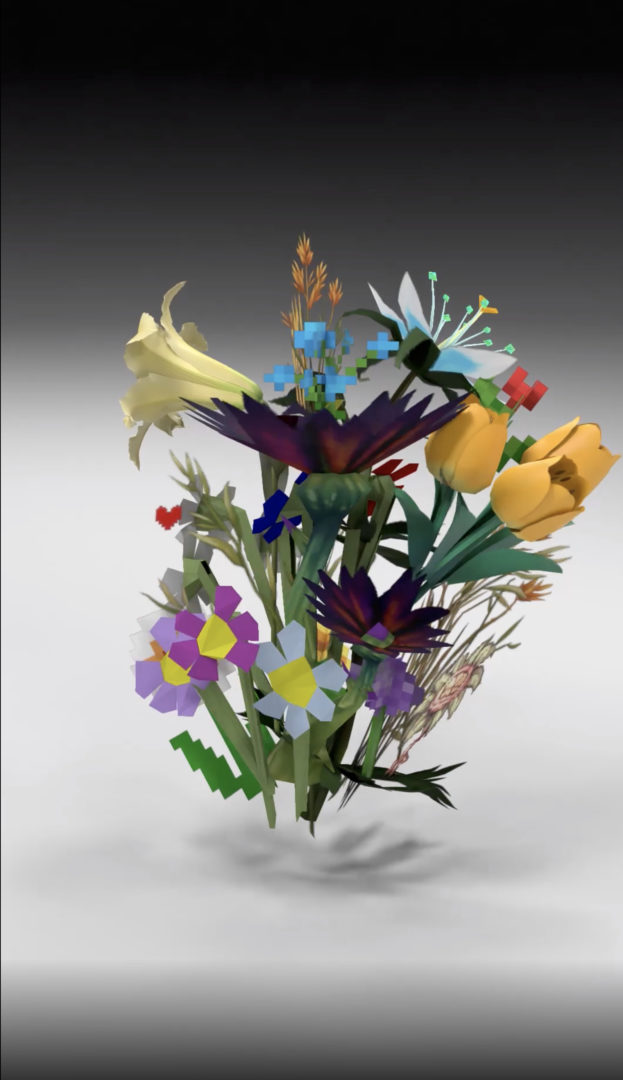Jill Magid at M Museum

Jill Magid infiltrates. Since the 1990s, the U.S. artist has investigated the economic and symbolic relationships between art and power structures. Since her takeover of the digital signage at MIT, converting the units into surveillance monitors, the artist methodically penetrates secret and private systems, taking on the role of agent. If certain works can go so far as to lead her to take on exceptional professional functions, to be an agent is a discipline in and of itself. According to the etymology of the Latin term agere (to act), Magid is interested in the impact of these operations as well as in their long term consequences. Through domains as vast and specific as surveillance technology (from the Liverpool police to the Netherland’s secret service AIVD) and NFTs (Non-fungible tokens), her works analyse organisations which link institutional structures—monetary and metaphorical—and individuals. The long-term personal relationships she develops with these entities allow her to gain entry to bureaucratic and legal phenomena which in theory are inaccessible. This multimedia oeuvre—which combines sculpture, text, film and performance—produces a narrative and new forms which far exceed the documentary status of the original research and social interactions. The artist describes her position “as a protagonist who makes use of herself as a tool, in order to penetrate the inner networks of systems in order to call them into question.” This approach creates subtle and dramatic situations from which a cinematographic feeling emanates,” she said, referring to the film The Proposal. For her first feature-length film, she addressed the controversial history of the recuperation and equivocal—to say the least—management of the intellectual property rights of the Mexican architect Luis Barragán (1902-1988) by the Swiss company, Vitra.

To follow up the Barragán saga, Magid’s first solo exhibition in Belgium (musée M, Louvain) takes her inquiries toward the question of the management of a body of work—ranging from copyrights to intellectual property rights—a step further. Using a less pronounced documentary style than the aforementioned work, the film The Migration of the Wings is a poetic yet political mediation without voiceover which examines the trajectory of an altarpiece. The film takes Dieric Bouts’ Polyptyque du Saint-Sacrement (1464-1468), better known as The Last Supper, as its point of departure. The source of the Flemish masterpiece’s aura lies not so much in the work’s technical prowess and the delicateness of the details—rather it is the dichotomy between the centre (The Migration)and the lateral panels (The Wings)which gave Magidpause as she perused the M’s collections during a prospective visit. The lateral panels’ controversial episodes have been silenced by art history and stand in opposition to the silence of the placid expressions of Jesus and his apostles seated around the central meal which gives the work its title.
Commissioned by Leuven’s Confraternity of the Holy Sacrament at the beginning of the 15th century, the altarpiece references a time period which was particularly hostile toward the Jewish community. “An alleged profanation of the sacrament had occurred in Brussels in 1370, which led to the execution of several of the accused. From that point on, Christians revered the recovered hosts as the Eucharistic Miracle. In reverence of these miraculous hosts, which are linked to one of the most persistent anti-Semitic narratives of the medieval period and which was accepted as truth by the Roman Catholic church until the Second World War, the painting offers a new version of the Supper.” Treated as merchandise, the lateral panels were then removed and sold off by the church in the 18th century. The paintings were sent to Germany before being returned following the treaty of Versailles, then moved to a salt mine by the Germans in 1942. Amputated several different times, the altarpiece emblematises the questions of accessibility and use of a work which became a political object. Due to the nature of its woven narrative which intertwines the Old with the New Testament, it became the pretext for Magid to conduct an in-depth examination of the Diaspora.
The Migration of the Wings investigates margins in a poetic way. Conceived as a diptych, the film is accompanied by several reproductions of the hinges of the triptych cast in bronze (Bearings, 2023) as well as a mezuzah (Host Desecration, 2023) which was made from the pages of a book, (Mezuzah, 2023) which features a reproduction of the altarpiece. In the Jewish tradition, the mezuzah can be suspended above the entrance to a house, for example, to indicate the Jewish traditions of the household. Appearing before the film, these objects evoke notions of origin and of displacement. Arranged like pieces of evidence in an impending investigation, these objects which have been associated with texts—like the report of the displacement of the paintings by the Germans in 1942—allow for the understanding of the ambivalence of conditions under which the works were successively taken into custody, from the time of their creation up until the 20th century. The ensemble gives an overview of the context, which is tinged with violence and the slipperiness of the ownership of the work. So who does it belong to now? The Saint-Sacrament has been back at Saint-Peter’s church since 1945 and now belongs to the M museum’s collection. Bound closely to the city of Leuven despite the separation of church and state in place since 1831, the collegiate which displays the triptych shares the responsibility for the work with the museum which is in charge of its conservation. The ambiguity concerning the conservation of the work remains an issue, according to the curator of the exhibition, Valerie Verhack.

The panels were originally shown periodically to believers, and their ceremonious opening had a theatrical flair, differing from their current frontal display. The attention given to the body in Magid’s installation references notions of mobility, visibility and what is hidden, notions of time and of the Jewish tradition. According to Francesco Careri, who cites Bruce Chatwin: “…more than any other group, the Jewish have felt the impact of the moral ambiguity of settlement…Yahweh has always been a god of journeys.” Magid creates a work which goes beyond the static state of the contemporary exhibition. She resuscitates it, in all of its complex linkages with Jewish and Christian, nomadic and sedentary traditions. In the installation, the two screens of the film cannot be seen simultaneously. The viewer must slowly circulate around them, several times, in order to see all of the images on each surface. One of the sequences in the film focusses on the handling of the different parts of the triptych, during the crating of the works—meticulous movements which draw attention to the materiality of the work, in all of its objecthood. The other sequence retraces the different stages of the work’s displacements. It traces the lateral panels’ journey to what is now the Munich Pinakothek, where the mine is made palpable via sound equipment, which is visible in the spaces shown in the film. Microphones and speakers are positioned within the frame, conferring an almost human presence on the absent paintings. The soundtrack, which has been made using impulse technology, reinforces an impression of the passage of time. Like a subliminal message, the sound of the clarinet is also reminiscent of Olivier Messiaen’s Quartet for the End of Time, which he composed in 1940 while imprisoned in a Nazi camp. The investigation of the work transforms into a work in and of itself, imbued with a sense of freedom as it plunges the viewer into introspection. The reverberations and echoes also reference the shockwaves the artist’s works release, which incite the exchange of ideas and are cause of much debate and discussion. In The Proposal, it is the announcement of the fabrication of a diamond which was made with the architect’s ashes which lends a sound element to Barragán’s architecture, in particular because of the media frenzy it set off. Here, the spaces seem to be occupied by the spirit of the wings of the altarpiece. Like a rumour, the sounds of the work suggest these phantom-like relationships which remain present.
The altarpiece, which had once served as currency, contains—like every artwork—different levels of aesthetic values. In parallel with the exhibition at the M, the concomitant screening of the artist’s new NFT project at the Centre Pompidou places The Migration of the Wings within a context of contemporary technology, where complex systems tie it to the economy, art and power. With Out-Game Flowers, a series of flower bouquets including some very precious ones, picked and hacked from video game source code, like Zelda or Super Mario Brothers, Magid does more than just produce beautiful digital and speculative ensembles. “NFTs are essentially capitalism’s response to the question of how something which is infinitely reproducible can be made adequate and unique, which is quite fascinating in my opinion, and linked to the idea of bids in this project, and also to the status of property in the eyes of the law,” she noted.
The creative processes used by the artist define the result, which oftentimes, pushes back at the predefined laws and characteristics of the laws. Other artists who work along these lines, pushing the limits of intellectual property laws include the recently deceased Kobe Matthys (1970-2023). Over the course of twenty years, his work Agence (Agency) examined jurisprudence cases which addressed subjects or objects, whose nature plays out tensions and blurs the boundary between original and banal, individual and collective. Seemingly less objective than Agence, whose gestures seem more detached and follow a precise protocol, the aesthetic and visually poetic practice of Jill Magid shares with that of Matthys a similar friction with fiction, which is never far away.
1 Lincoln Ocean Victor Eddy (2007); Evidence Locker (2004); The Spy Project (2005-2010).
2 See recent projects: Tender and Tender Balance.
3 “The Strange Story of the Barragán Archives: The Architect Who Was Transformed Into a Diamond,” Slate, Elodie Palasse-Leroux, October 2022.
4 During the making the film, Magid, who had been working on the project for several years, presented the stages of her research in differing forms including as an exhibition. One example is Woman with Sombrero, The Barragán Archives, Centre Pompidou (2022).
5 Exhibition text.
6 Francesco Careri, Walkscapes. Walking as Aesthetic Practise, Actes Sud, Arles, 2013.
7 See Auto Portrait Pending (2005), a contract which engages the artist in the same procedure. Magid has signed a contract with a company which will make a diamond out of the carbon resulting from her own cremation.


______________________________________________________________________________
Head image : The Proposal, 2016
2.02 carat, uncut diamond with the micro-laser inscription ‘I am whole heartedly yours’, silver ring setting, ring box, documents.
- From the issue: 104
- Share: ,
- By the same author: Florence Jung, Camille Picquot, Denicolai & Provoost, Béatrice Balcou,
Related articles
Iván Argote
by Patrice Joly
Laurent Proux
by Guillaume Lasserre
Diego Bianchi
by Vanessa Morisset

